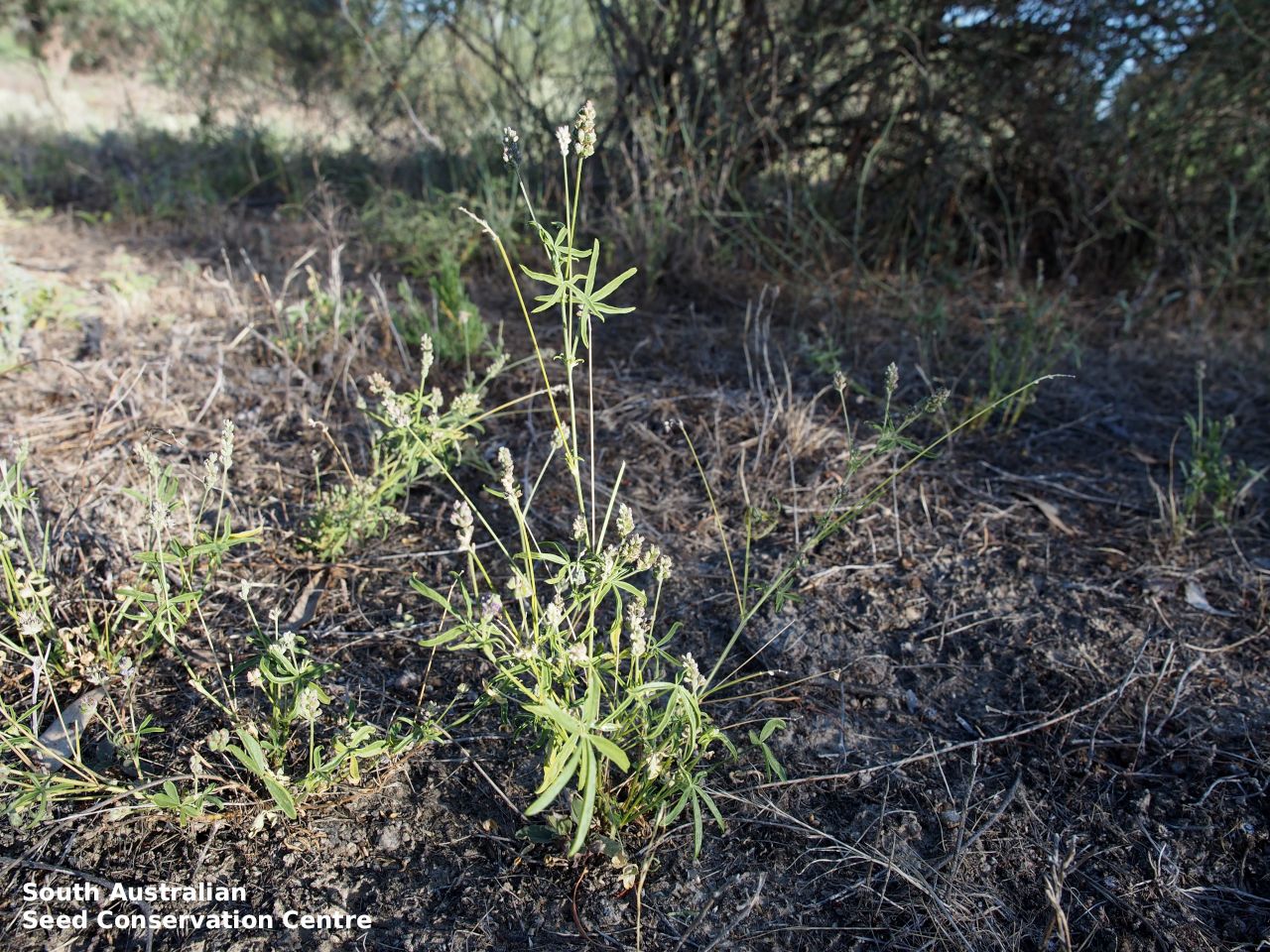
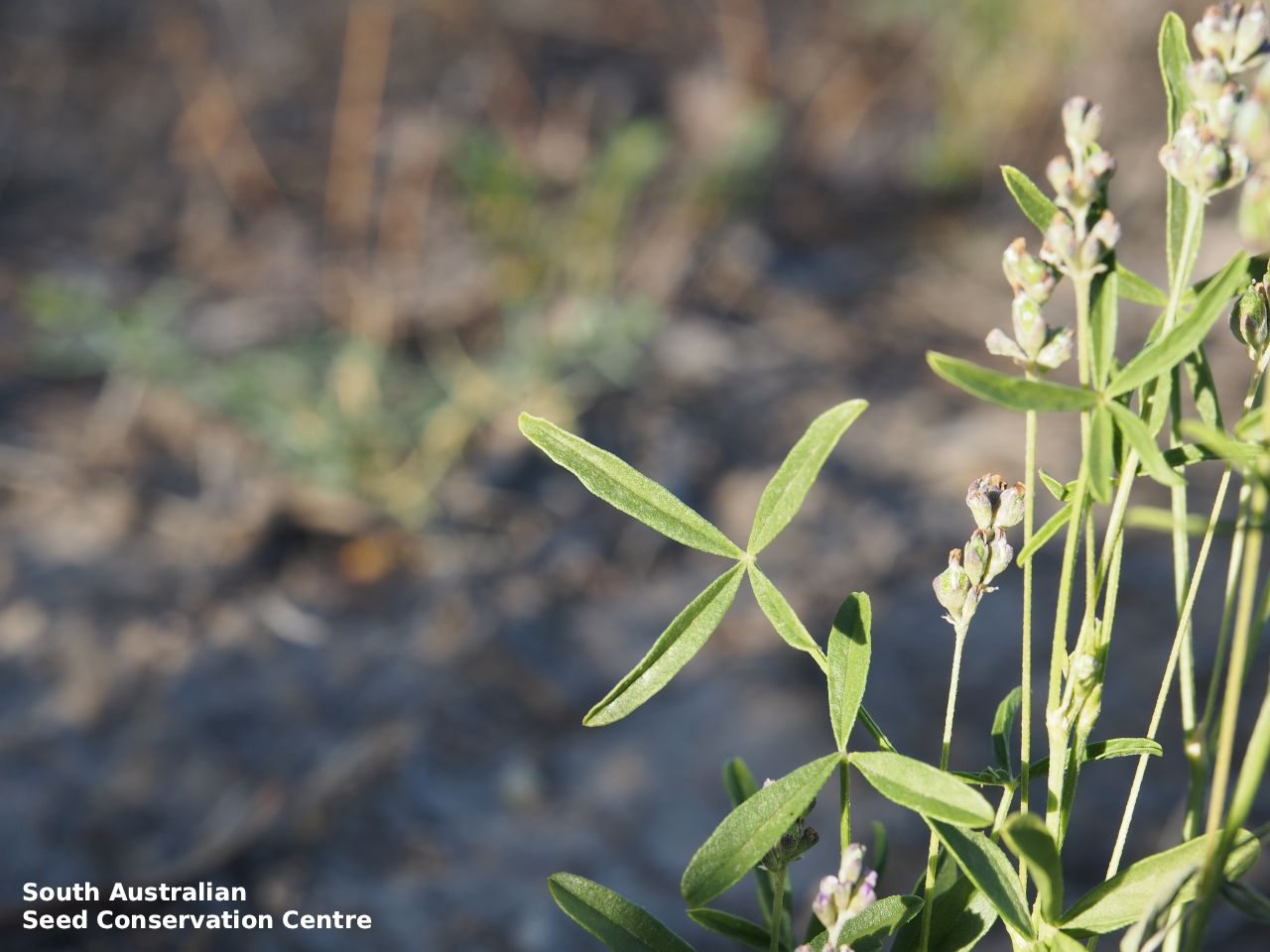
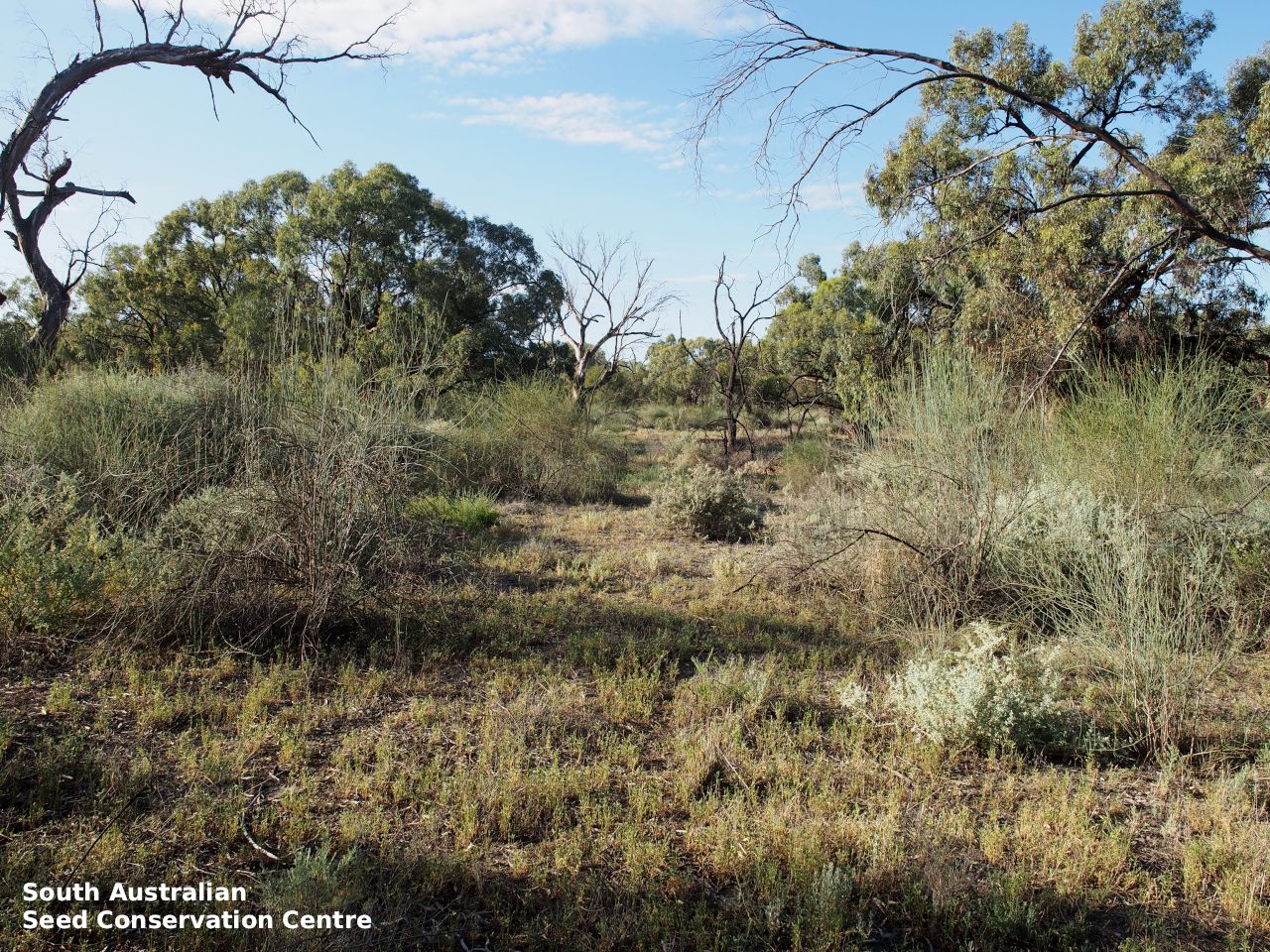
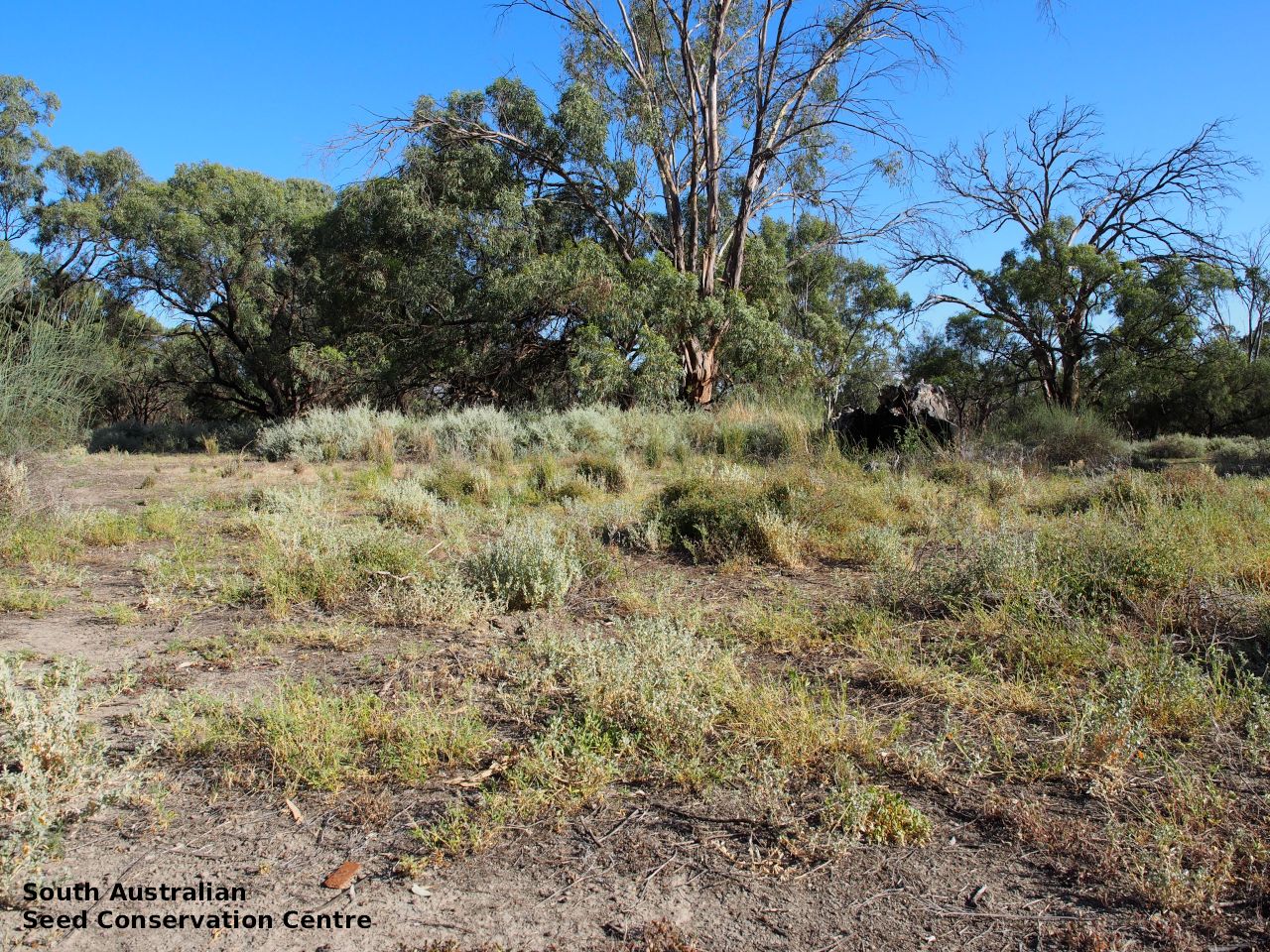
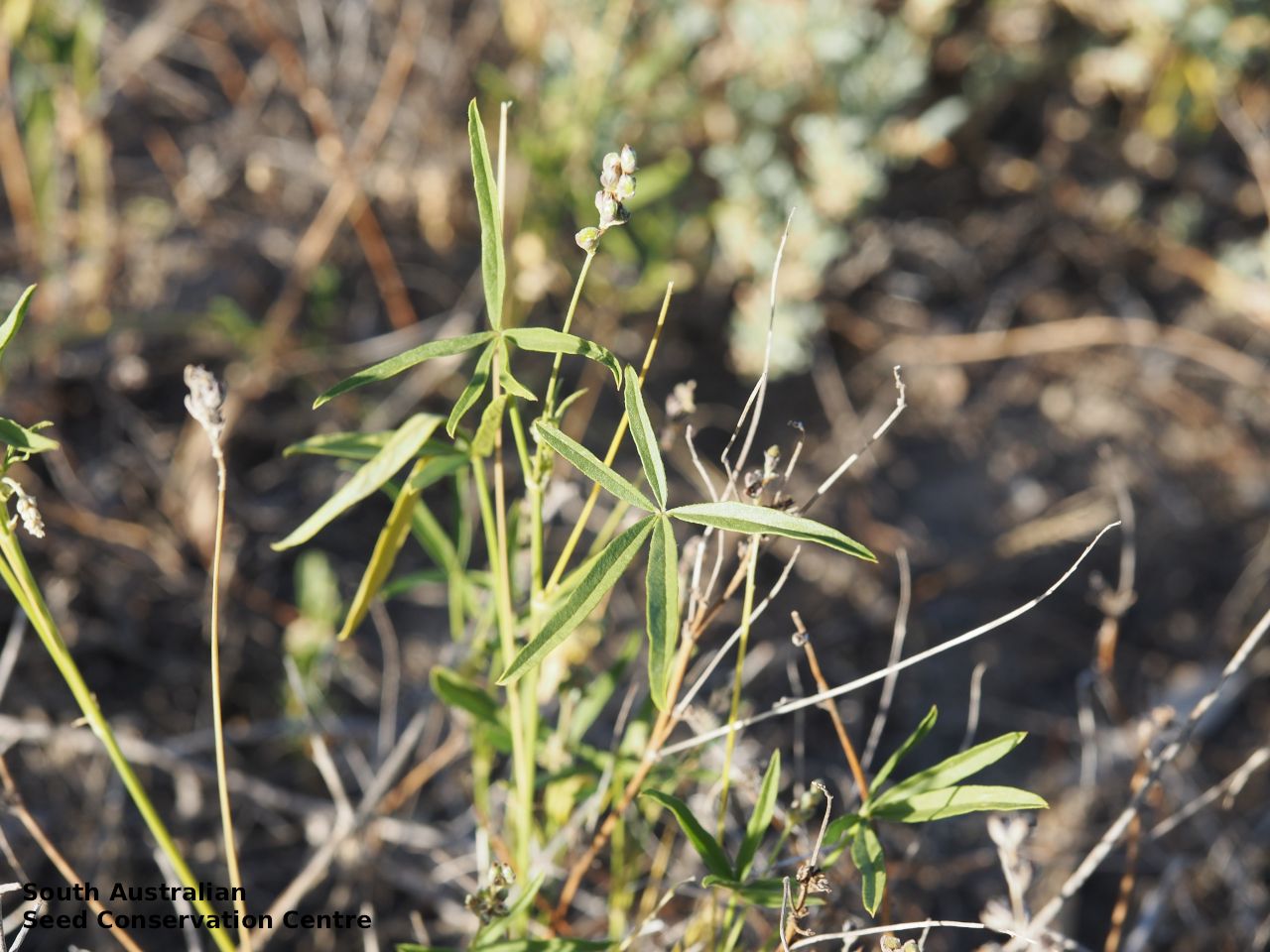
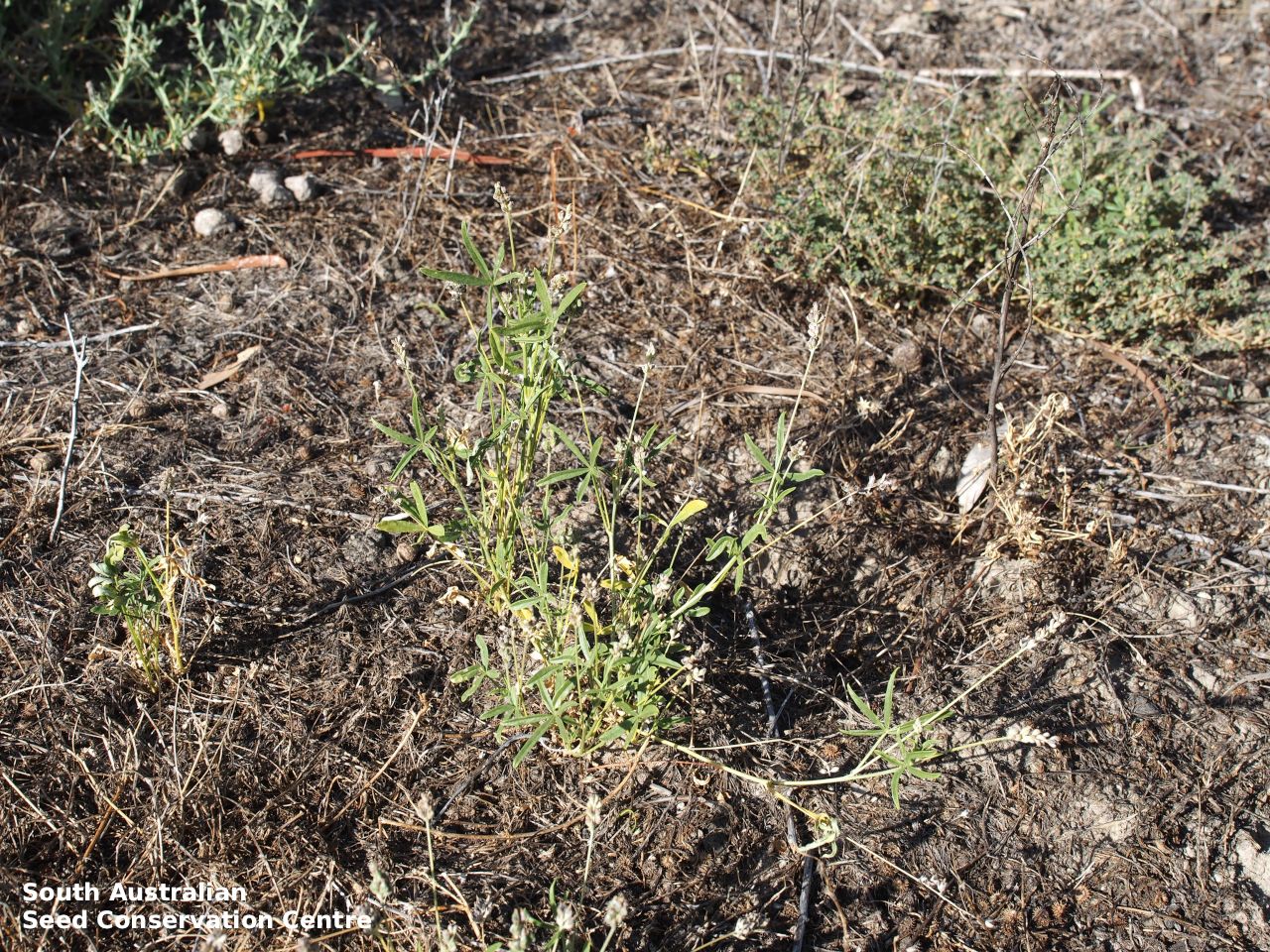
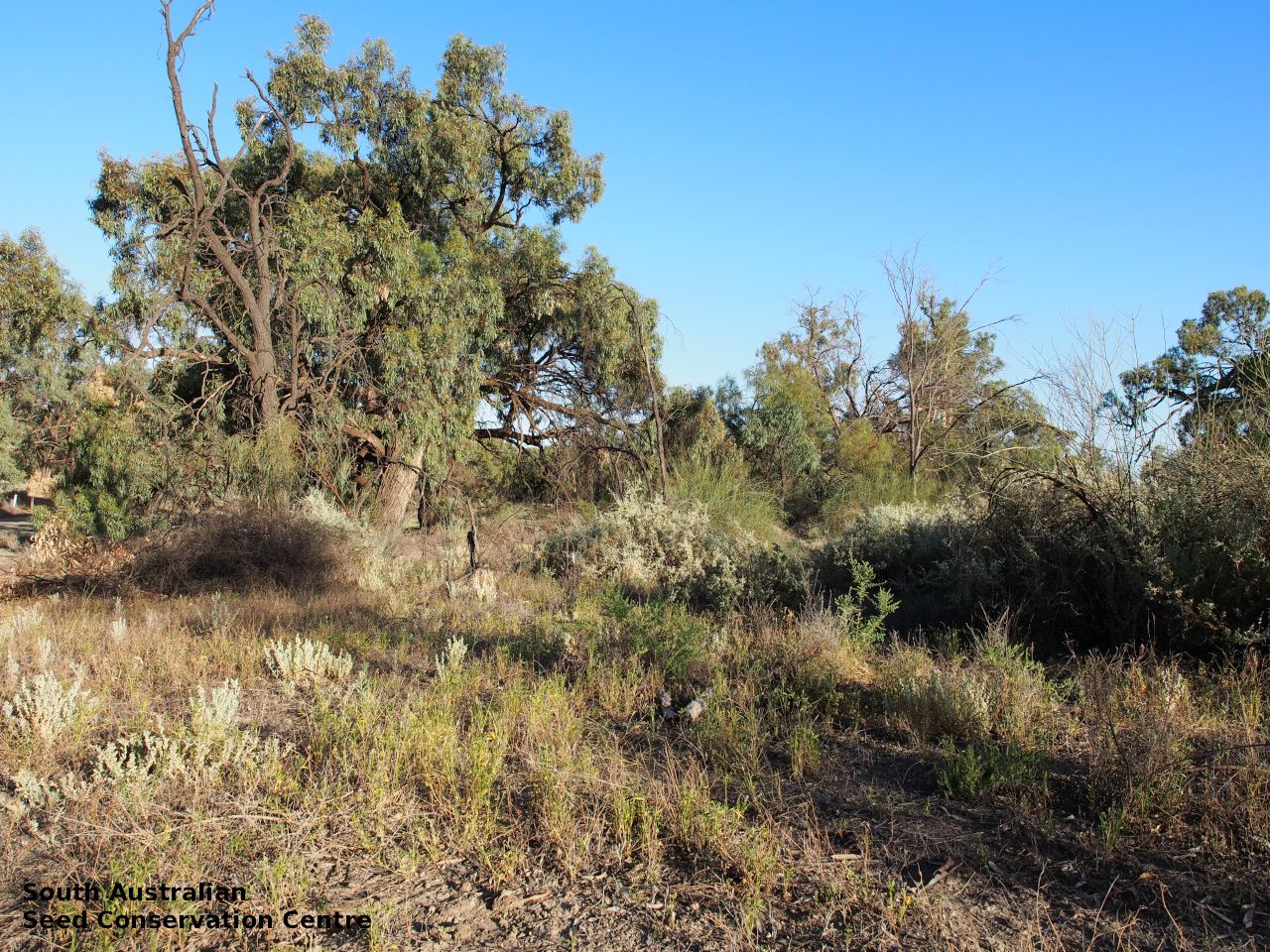
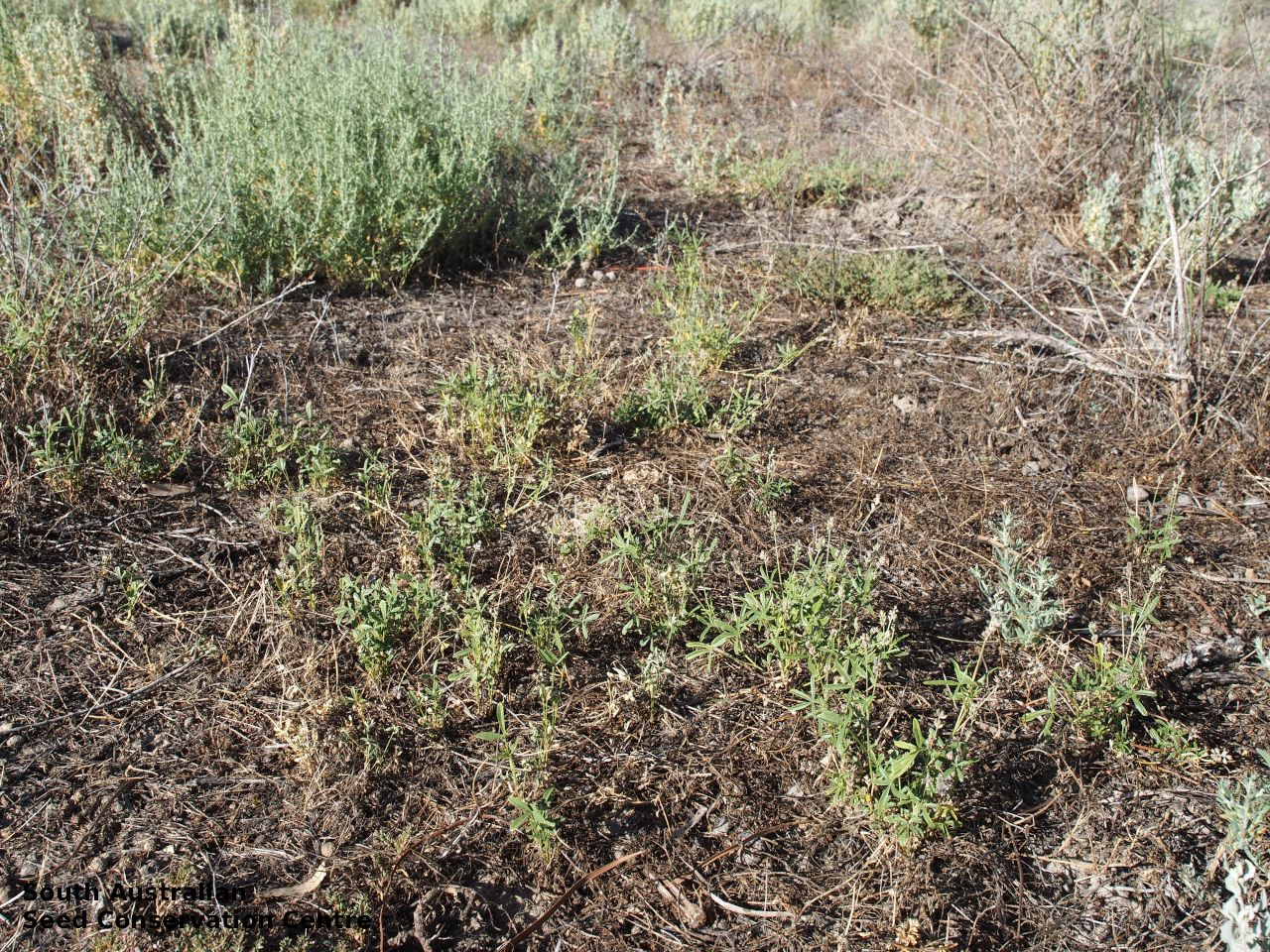
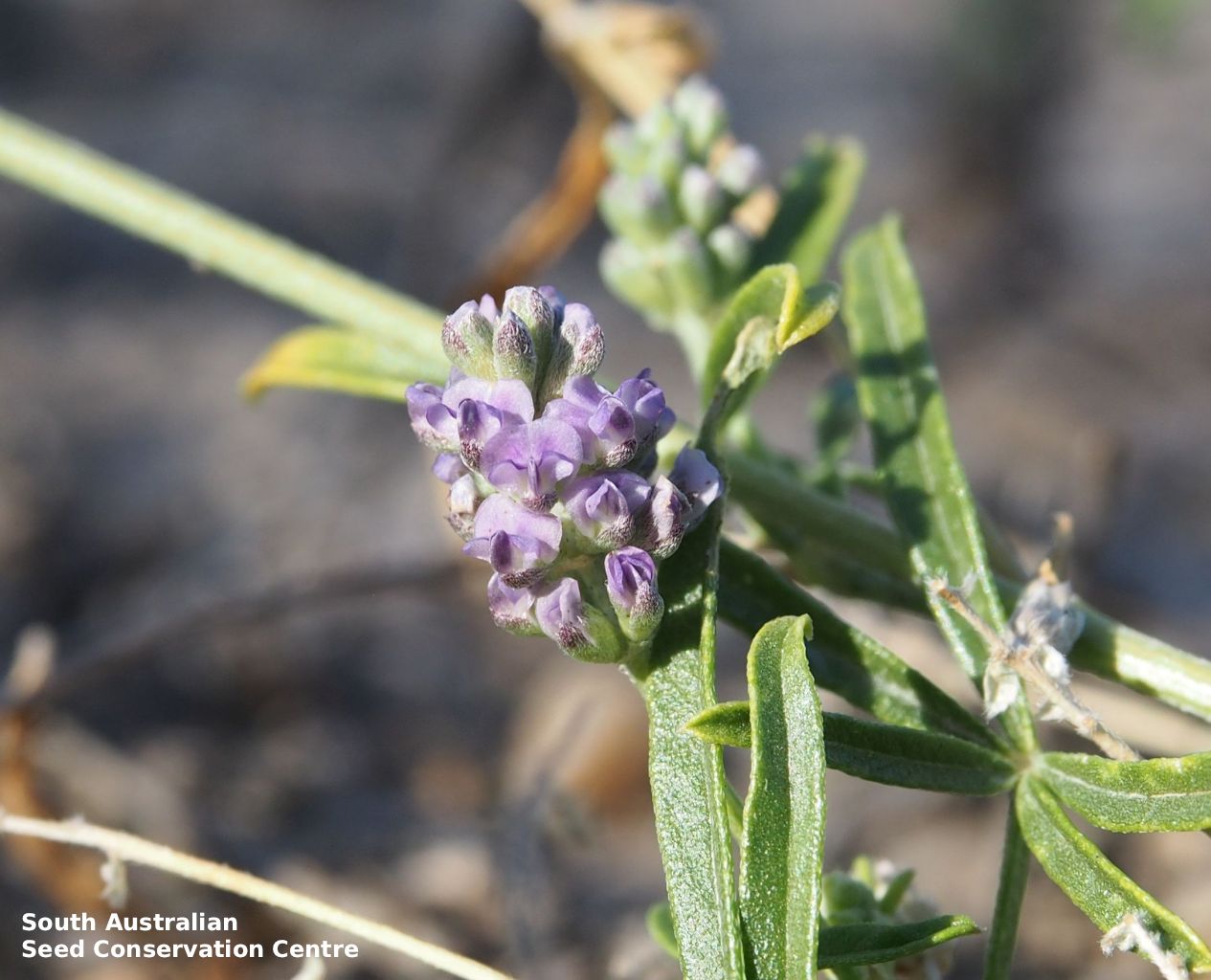
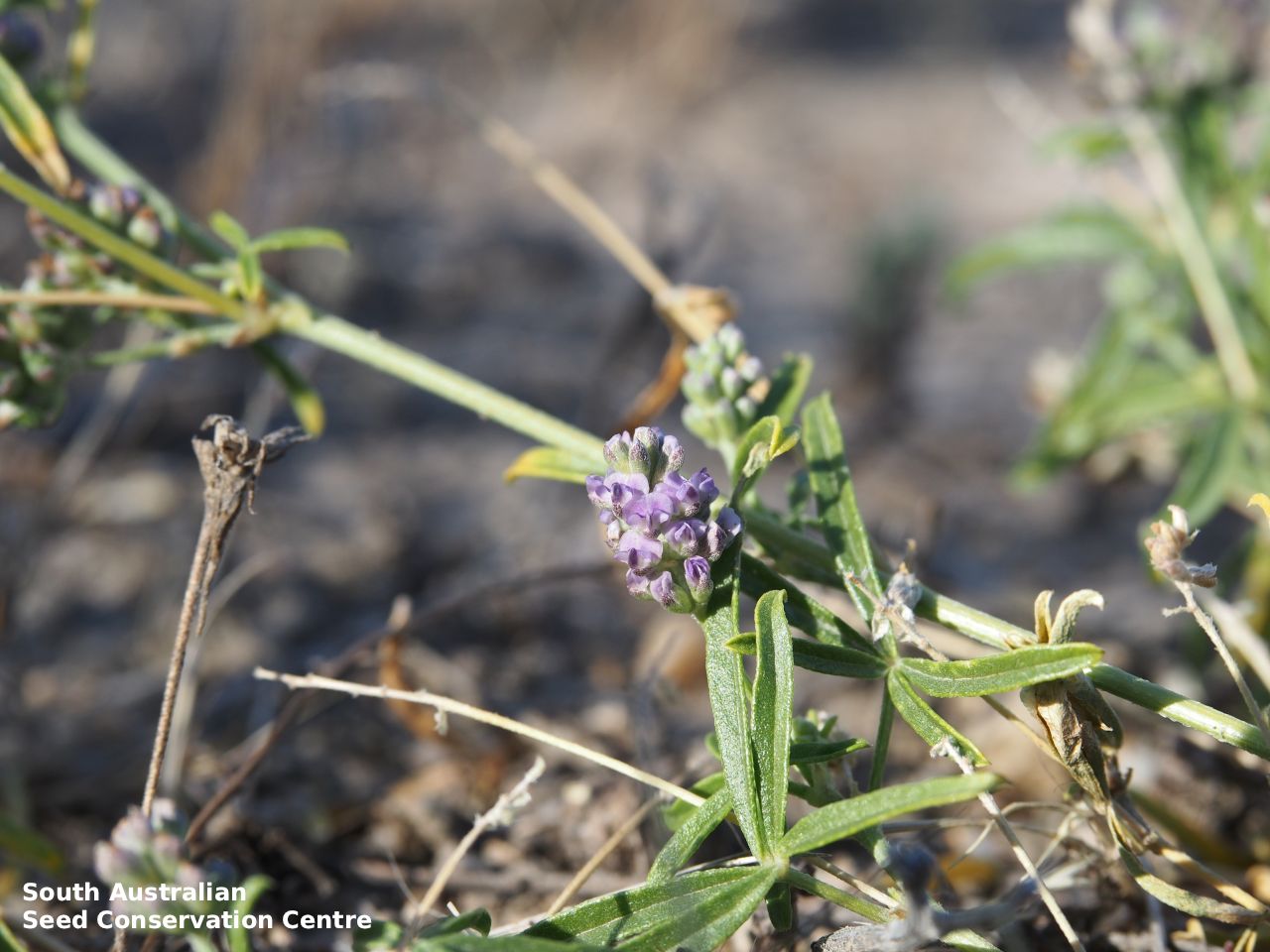
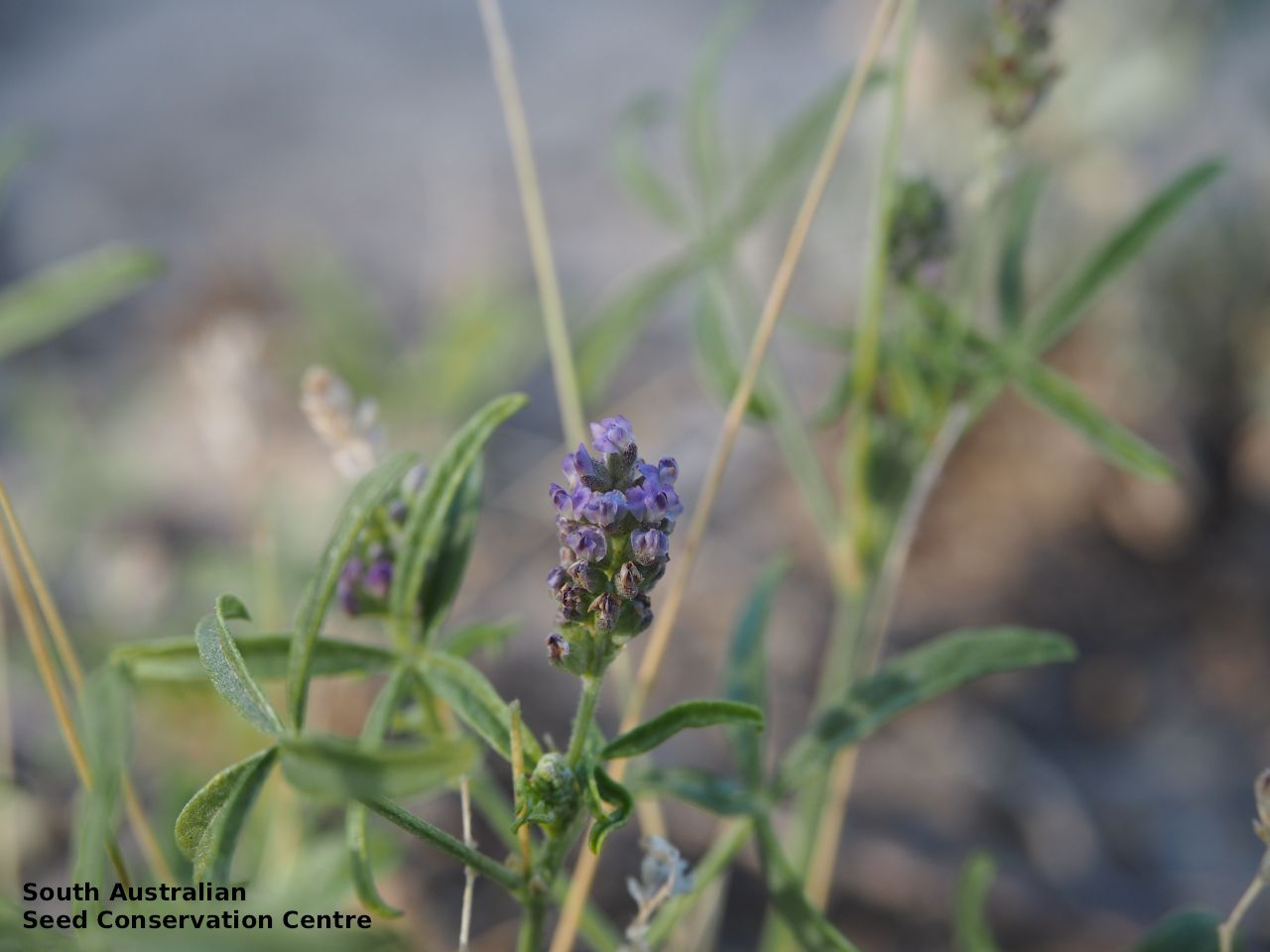
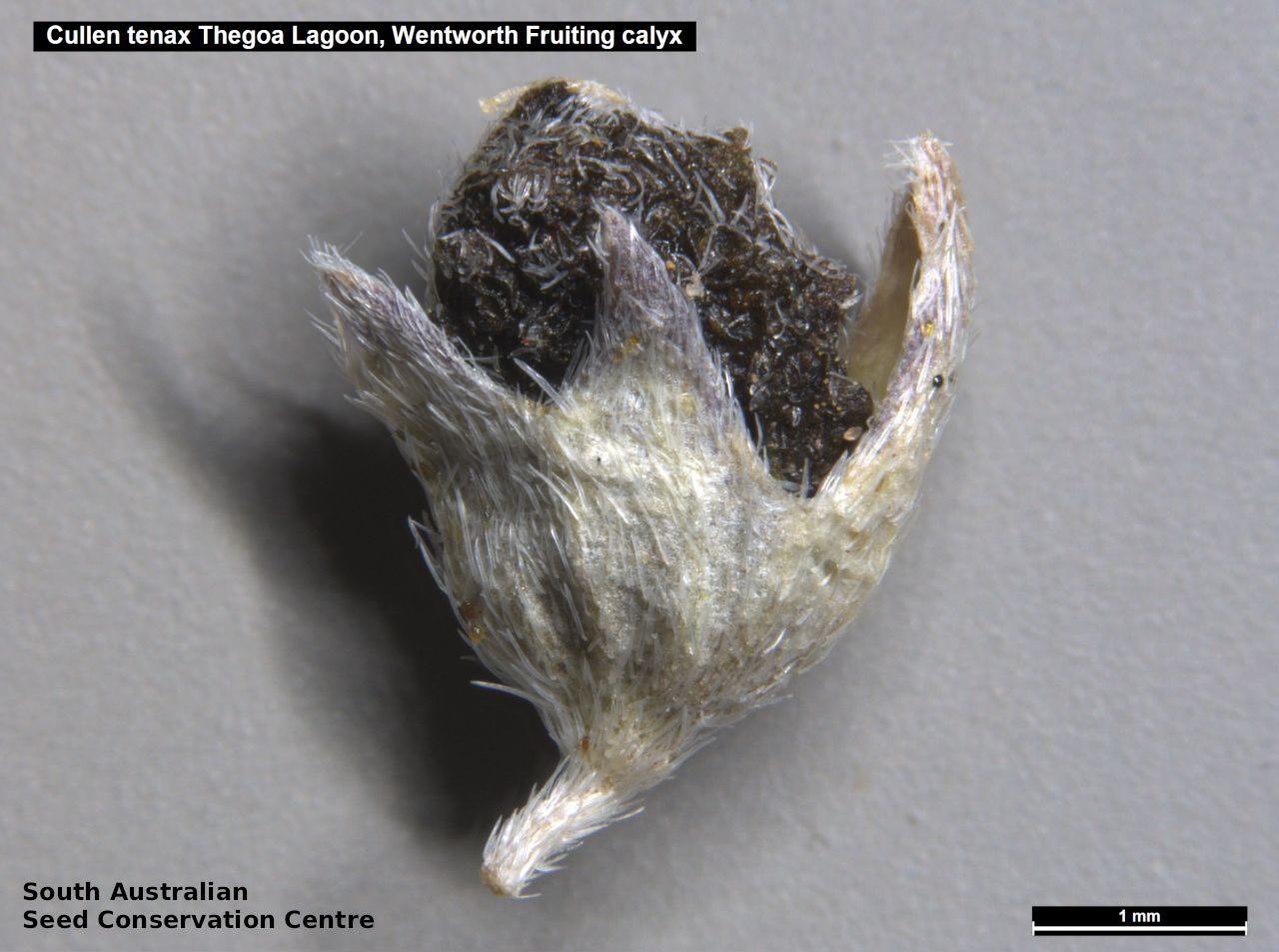
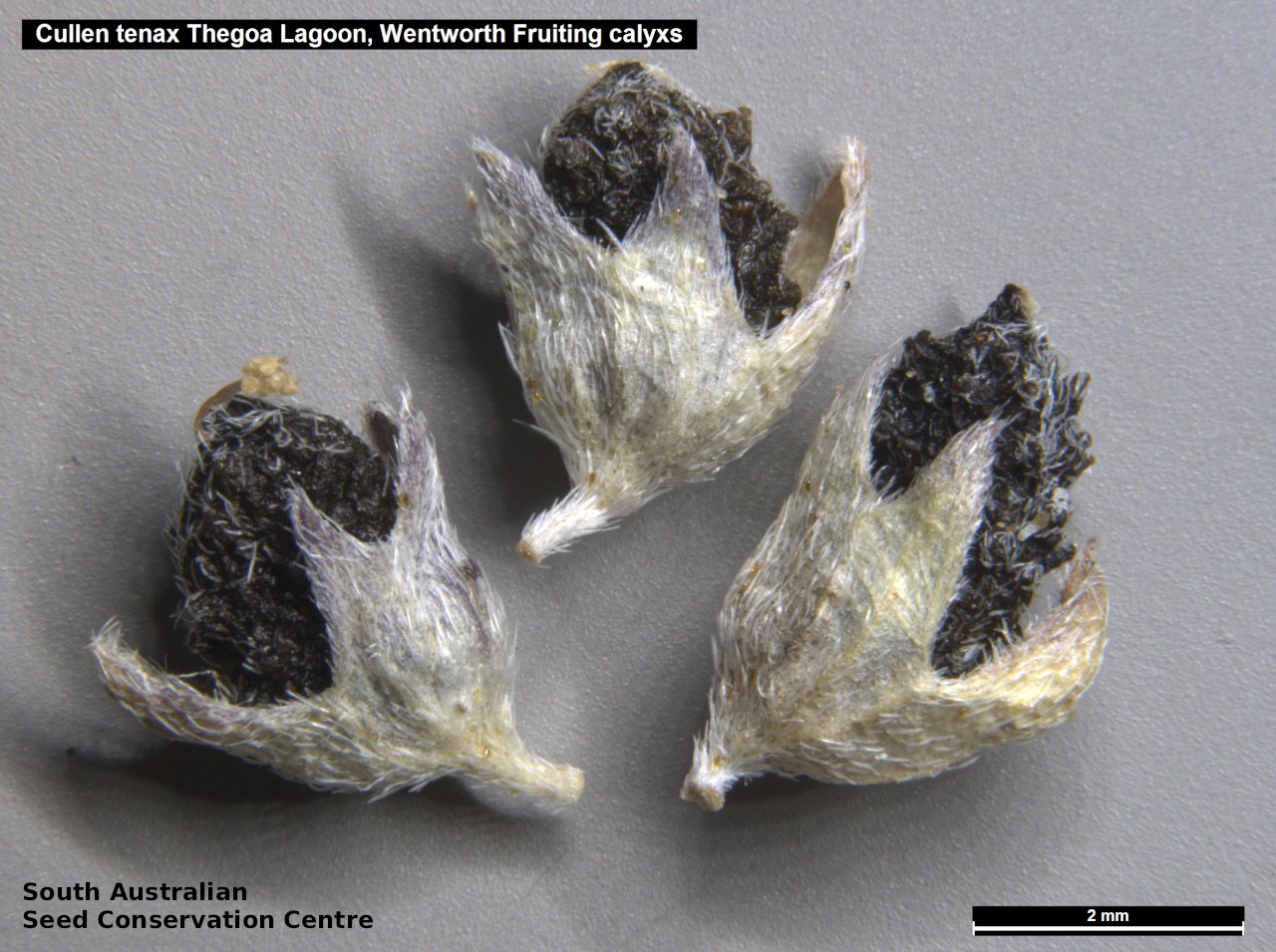
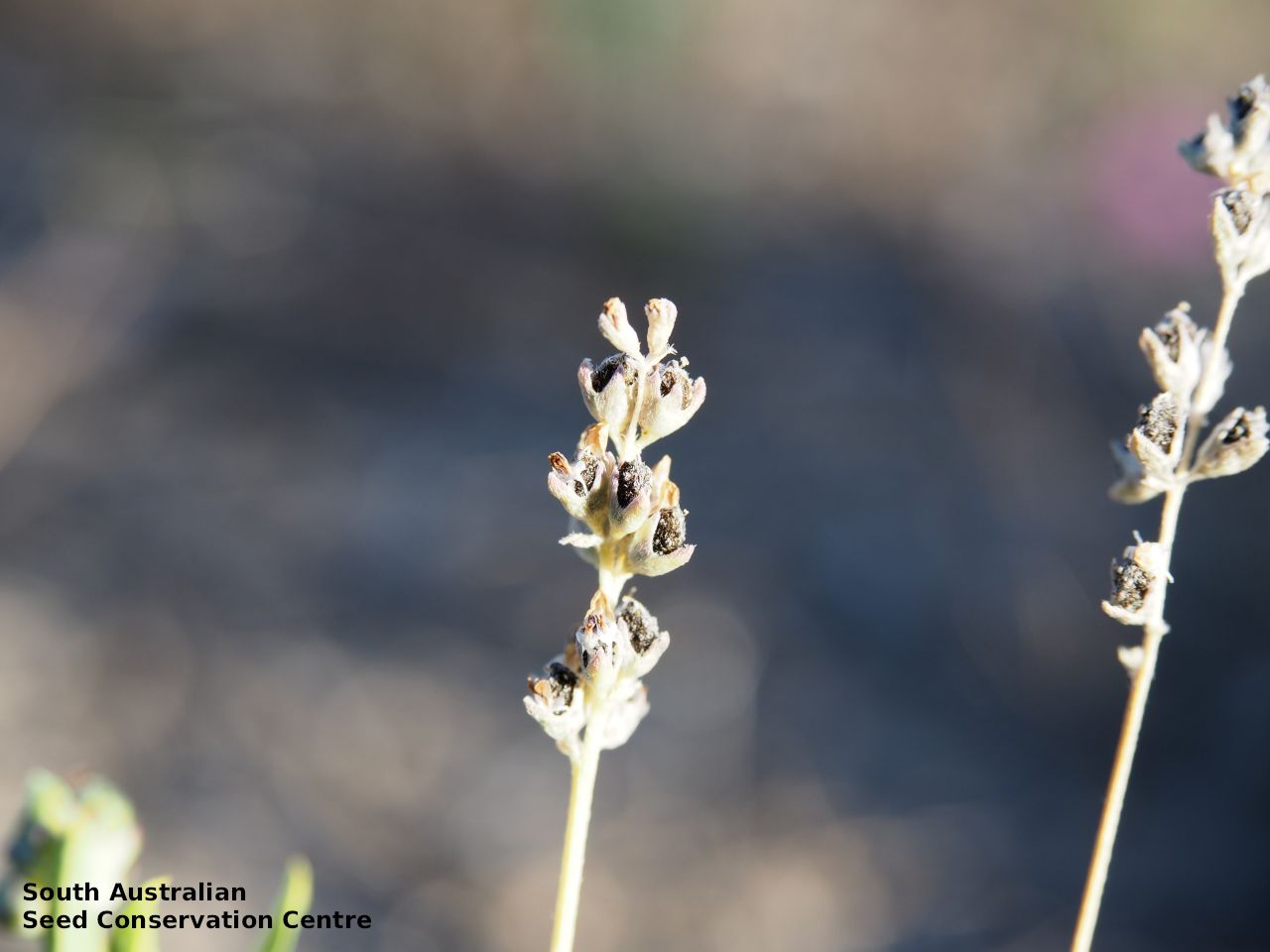
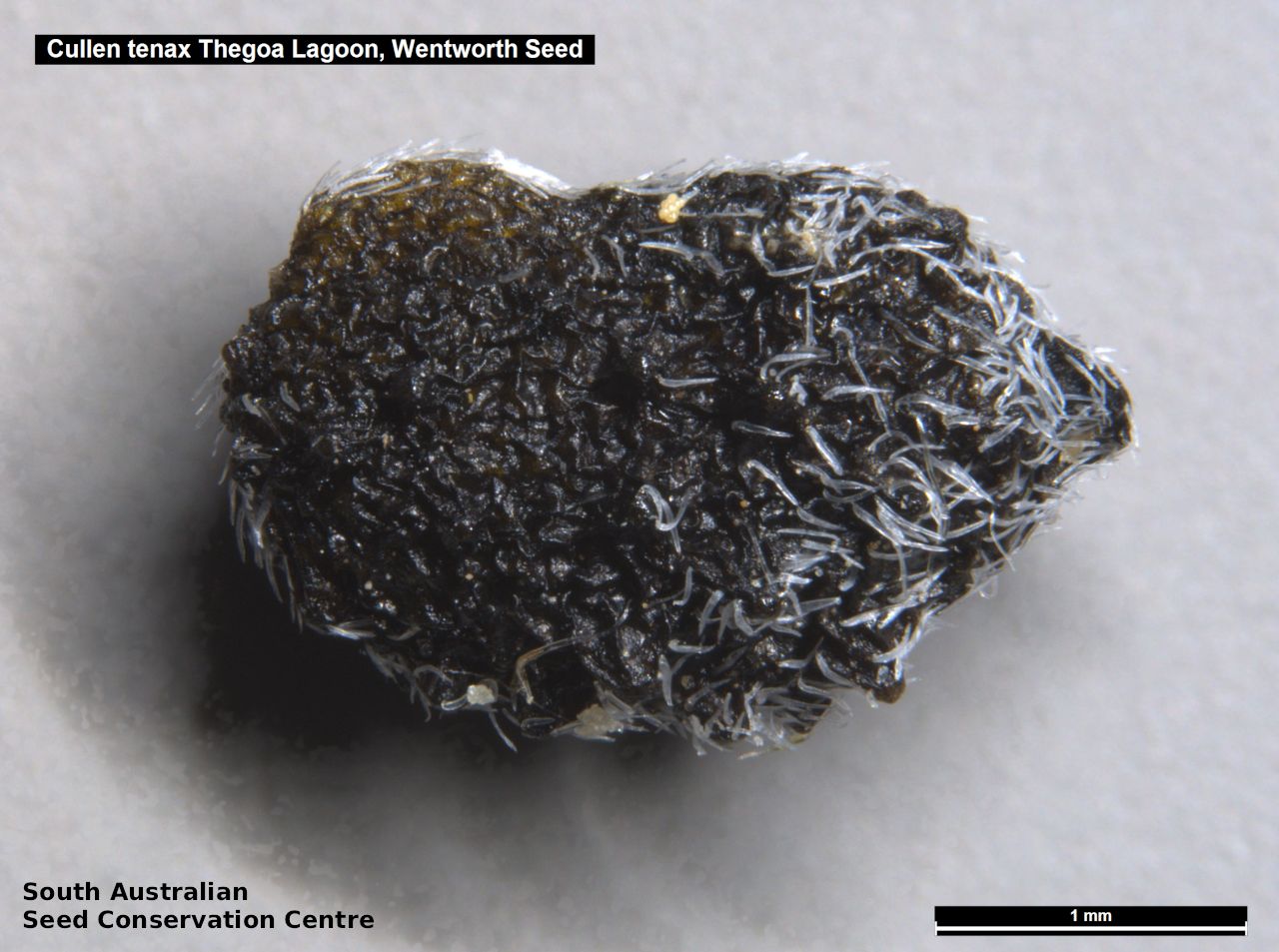
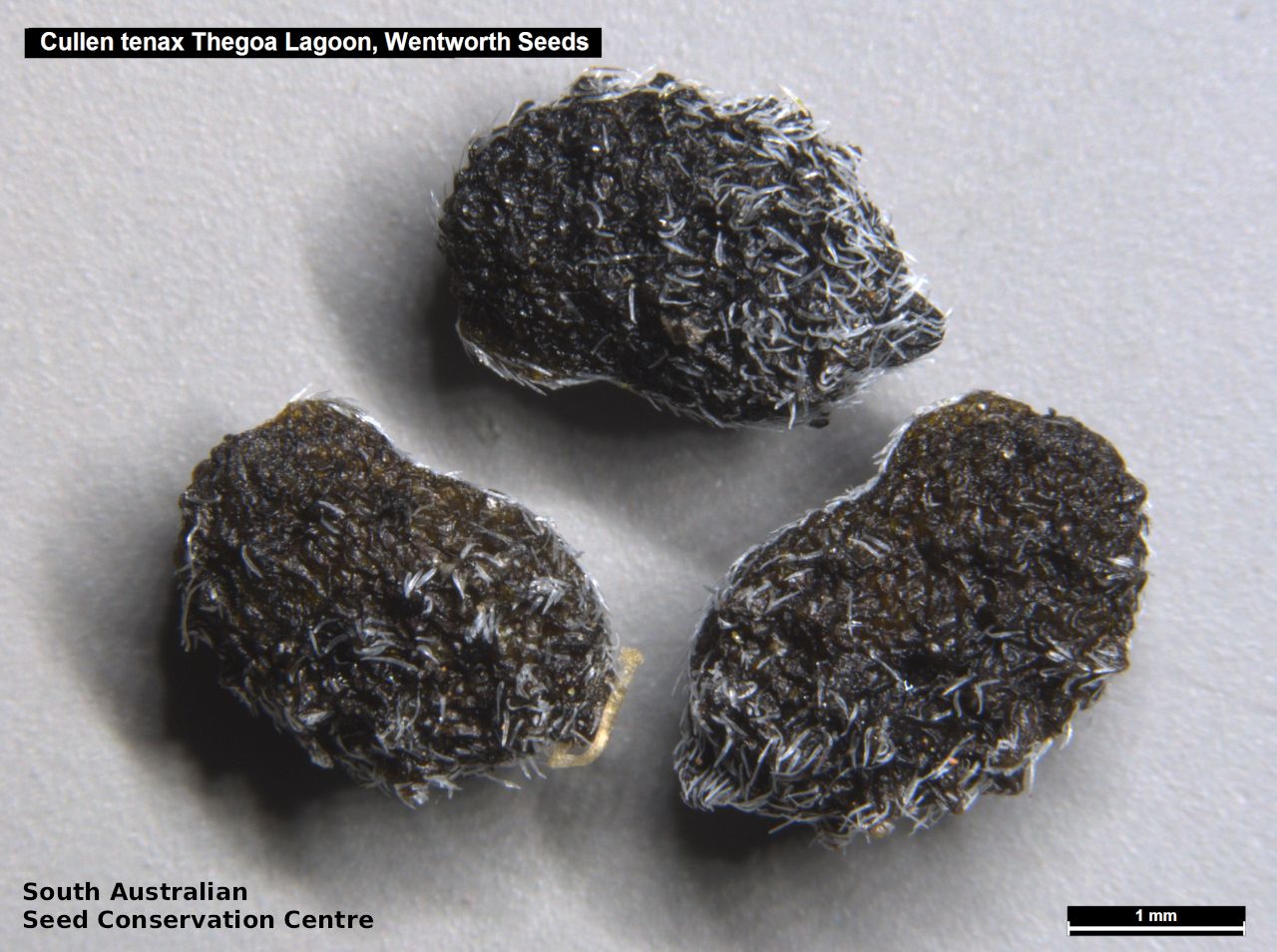


Prior names
Psoralea tenax
Etymology
Cullen named after William Cullen (1710-1790), a Scottish physician and chemist who lectured at the University of Glasgow on botany, among other things. Tenax from the Latin 'tenax' meaning holding fast, clinging, firm.
Distribution and status
Known only from two records in South Australia from Mingary in EA region and Mount Brown CP growing in grassland and grassy woodland on heavy soils. Also found in Queensland, New South Wales and Victoria. Native. Very rare in south Australia. Rare in Victoria. Common in the other States.
Herbarium regions: Flinders Ranges, Eastern
NRM region: South Australian Arid Lands
AVH map: SA distribution map (external link)
Plant description
Perennial herb with stems to 50 cm long, decumbent, procumbent or erect; glabrous or with minute appressed hairs. Leaves mostly to 15 cm long, palmately compound, mostly with 5–7 leaflets or sometimes lower leaves 3-foliate; leaflets usually linear-lanceolate to oblong-elliptic, or elliptic to oblanceolate, or rarely obovate to 6 cm long and 15 mm wide; margins entire or rarely coarsely crenate; both surfaces sparsely hairy and dotted with minute glands. Flower-spike to 5 cm long with bluish or mauve-purple pea-flowers. Flowers most of the year. Fruits are black pod to 3 mm long, wrinkled, glabrous with one seed inside. Seeds are black ovoid seed to 3 mm long and 2 mm wide, with rugose and tuberculate surface, covered in scattered white hairs. Seed embryo type is bent.
Seed collection and propagation
Collect seeds between January and December. Collect maturing pods, those that are fat, turning black and contain a brown seed inside, by running your hands along the fruit-spikes. Place the pods in a tray and leave to dry for 1 to 2 weeks or until the pods begin to split. Then rub the dried pods to dislodge the seeds. Use a sieve to separate any unwanted material. Store the seeds with a desiccant such as dried silica beads or dry rice, in an air tight container in a cool and dry place. This species has physical dormancy that needs to be overcome for the seed to germinate (e.g. nicking or softening the seed coat).
| Location | No. of seeds (weight grams) | Number of plants | Date collected | Collection number Collection location | Date stored | % Viability | Storage temperature |
|---|---|---|---|---|---|---|---|
| BGA | 8,300 (32.640 g) | 100 | 8-Jan-2018 | Thegoa Lagoon | 28-Jun-2021 | 85% | -18°C, -80°C |
Number of plants: This is the number of plants from which the seeds were collected.
Collection location: The Herbarium of South Australia's region name.
% Viability: Percentage of filled healthy seeds determined by a cut test or x-ray.